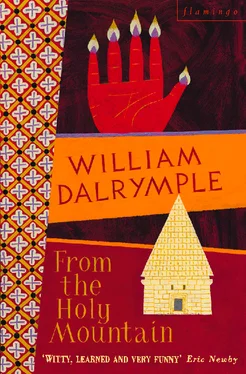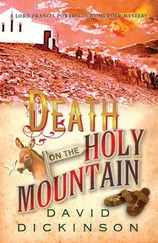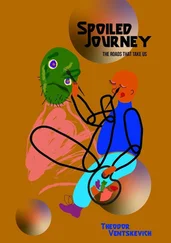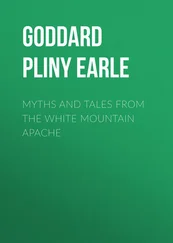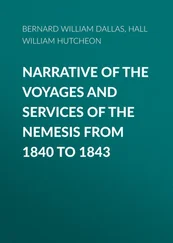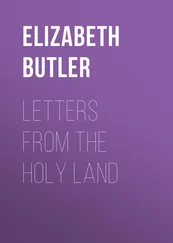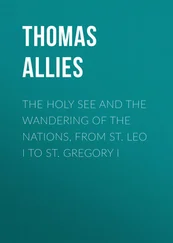‘The Muslims also believe in St George,’ explained a young Greek student I met waiting by the jetty half an hour later. ‘They hear St George is working miracles so they come here and ask him for babies. Maybe they don’t know he is Greek.’
‘They probably think he is Turkish,’ said her friend.
‘Probably,’ said the first girl. ‘They think everything is Turkish. I’ve heard boys say Haghia Sophia and the Hippodrome were built by the Seljuk Turks.’
‘They don’t know history,’ agreed the second girl. ‘One day some boy asked my sister, “Why did you Greeks come here? All you do is make trouble.” She said, “We didn’t come: you did.’“
‘They even think Homer was one of them,’ sighed the first girl. ‘They say he was a Turk and that his real name was Omar.’
11 p.m.: I have just returned from supper with Hugh Pope, Turkey correspondent of the Independent . We ate in a fish restaurant at Bebek, five miles up the Bosphorus, overlooking Asia. Talk soon turned to the Kurdish war currently raging in the southeast.
‘At least fifty people are being killed every day,’ he said. ‘Unless at least two hundred are gunned down, I don’t even bother calling the Foreign Desk.’
Hugh told me that the previous December, when the Independent sent him to Diyarbakir, he managed to get through to the largest of the surviving Syrian Orthodox monasteries in the southeast, Mar Gabriel. The day before he arrived, a lorry had hit an anti-tank mine two hundred metres from the monastery’s front gate. As he drove up, the charred corpse of the driver was still sitting in the burned-out skeleton of the truck, hands welded to the wheel. The mine had apparently been placed by the PKK, the Revolutionary Kurdistan Workers’ Party, and was thought to have been aimed at village guards – in the eyes of the PKK, collaborators with the Turkish government – passing on their way to the neighbouring village of Güngören. Although the mine’s target did not seem to have been the monastery, it dramatically brought home to the monks how vulnerable they were to being caught in the crossfire between the PKK and the government.
According to Hugh, the Kurdish guerrillas dislike the Suriani Christians as much as the local government does, accusing them of being informers, just as the authorities accuse them of being PKK sympathisers. Moreover, the Kurds have much to gain by driving the Suriani out: they can then occupy their land and farm it themselves.
Yet the problems faced by the Christians and the Kurds have similar roots. The Ottoman Empire was administered by a system which allowed, and indeed thrived on, diversity. Each millet or religious community was internally self-governing, with its own laws and courts. The new Turkey of Ataturk went to the opposite extreme: uniformity was all. The vast majority of Greeks were expelled, and those who remained had to become Turks, at least in name. The same went for the Kurds. Officially they do not exist. Their language and their songs were banned until very recently; in official documents and news broadcasts they are still described as ‘Mountain Turks’.
It is this ludicrous – and deeply repressive – fiction that has led to the current guerrilla war. Because of it the rebels of the PKK are now involved in a hopeless struggle to try and gain autonomy for the Turkish Kurds, something Ankara will never allow. More than ten thousand people have been killed in the south-east of Turkey in the last five years, and great tracts of land and around eight hundred villages have been laid waste in an effort to isolate and starve out the guerrillas. At least 150,000 Turkish troops are tied down in the mountains of the south-east, fighting perhaps ten thousand PKK guerrillas. At the moment the government seems to have the upper hand, and it is said the average life expectancy of a guerrilla is now less than six months. Hugh says that the fighting, though currently intermittent, is expected to reach a new climax in the coming weeks: summer is the fighting season.
I plan to set off to the south-east next week. Antioch – modern Antakya – is on the edge of the trouble. Once there it should be easier to judge how bad things really are: it is virtually impossible to gauge the difficulty of getting to the Syrian Orthodox monasteries from here, and the situation changes from day to day. Inshallah it should be possible to get through without taking any unreasonable risks. Hugh has given me the name of a driver in Diyarbakir who last year was willing – for a price – to drive him into the war zone.
He also raised the question of whether I should get a press card. On the one hand, he says, the authorities in the south-east hate all journalists: last year his wife was beaten up by the police in Nusaybin when she produced her card. On the other hand, he says that no one will believe me if I say I’m a tourist – no tourist has gone anywhere near the south-east for three or four years now – and if I have no Turkish ID he tells me that there is a real possibility that I could get arrested for spying.
On my return from supper I asked the advice of Metin, the hotel receptionist, whose home is in the south-east. He seems to think my plans are hysterically funny. ‘Don’t worry, you’ll only get shot if you run into a PKK roadblock, and only get blown up if you drive over a landmine. Otherwise the south-east is fine. Completely safe. In fact highly recommended.’
Becoming serious, Metin said that if the police did not arrest me, and if I did not drive over any landmines, there was always the delightful possibility of being kidnapped by the PKK. This happened last year to three British round-the-world cyclists. They were not in the least harmed, but as the guerrillas cannot light fires – that would reveal their whereabouts to the army – the hostages were forced to live for three months on snake tartare and raw hedgehog.
‘The tourists should consider themselves lucky,’ said Metin. ‘If it had been Turkish soldiers that had fallen into the PKK’s hands, they would have had their dicks cut off. Then the PKK would kill them. Roasted them over a fire or something. Very slowly. Chargrilled them.’
‘And this sort of thing still goes on?’
‘These guys are committing mass murder right now,’ answered Metin.
‘But they only do that to Turkish soldiers, right?’
‘You can’t be too careful in the east,’ said Metin, twirling his moustache. ‘As they say in Ankara: Kurdistan is like a cucumber. Today in your hand; tomorrow up your arse.’
My last day in Istanbul; tonight the train.
This morning I went to the Phanar to say goodbye to Fr. Dimitrios, and to collect the letters of introduction he has written to the hegumenoi (abbots) of the Greek monasteries in the Holy Land and Sinai.
Running down the stairs from Fr. Dimitrios’s office, I knocked into a visiting Greek monk who was crouching in the doorway leading into the courtyard, feeding the sparrows. I apologised and we fell into conversation. He said he had been to England once but did not like it much. ‘It was so sad,’ he remarked. ‘All the churches were closed. In Ipswich I went. Not one church was open. Not one!’ He added darkly: ‘I read in a magazine that the head of the Satan Cult lives in England.’
He disliked London and was unimpressed by Buckingham Palace. In fact only two places really appealed to him. One was Kew: ‘Your Kew Gardens! So beautiful! So lovely! I would feed the squirrels and bring them nuts.’ The other was a shop in Lambeth which sold religious trinkets. From his suitcase the monk produced a small plastic hologram of Christ. ‘It is so beautiful, no? It is by a Swiss artist and is based on the exact likeness of Jesus. Some of the other monks think it is not pleasing to look at, but I do not understand why. Walk around: look! Now our Lord is smiling! Now he is showing his sobriety! Now he is dead. Now he is risen! Alleluia! It is so beautiful, no? I carry it with me always.’
Читать дальше
